Hyunhee Cho
Quantum Multi-Agent Reinforcement Learning via Variational Quantum Circuit Design
Mar 20, 2022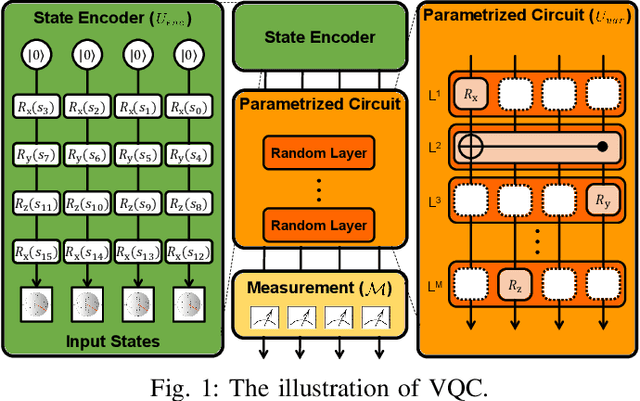

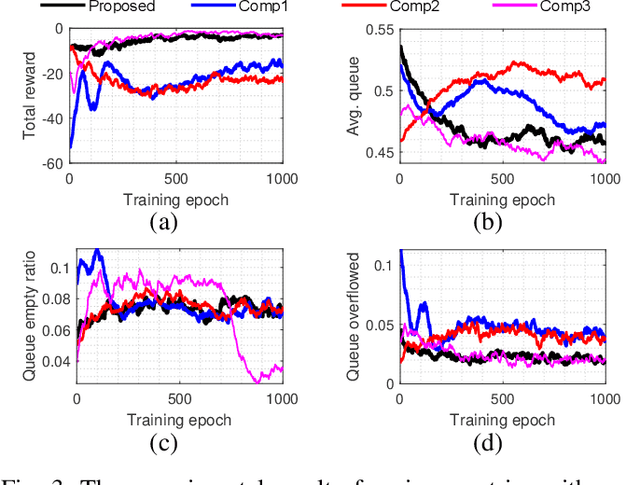

Abstract:In recent years, quantum computing (QC) has been getting a lot of attention from industry and academia. Especially, among various QC research topics, variational quantum circuit (VQC) enables quantum deep reinforcement learning (QRL). Many studies of QRL have shown that the QRL is superior to the classical reinforcement learning (RL) methods under the constraints of the number of training parameters. This paper extends and demonstrates the QRL to quantum multi-agent RL (QMARL). However, the extension of QRL to QMARL is not straightforward due to the challenge of the noise intermediate-scale quantum (NISQ) and the non-stationary properties in classical multi-agent RL (MARL). Therefore, this paper proposes the centralized training and decentralized execution (CTDE) QMARL framework by designing novel VQCs for the framework to cope with these issues. To corroborate the QMARL framework, this paper conducts the QMARL demonstration in a single-hop environment where edge agents offload packets to clouds. The extensive demonstration shows that the proposed QMARL framework enhances 57.7% of total reward than classical frameworks.
Quantum Heterogeneous Distributed Deep Learning Architectures: Models, Discussions, and Applications
Mar 02, 2022
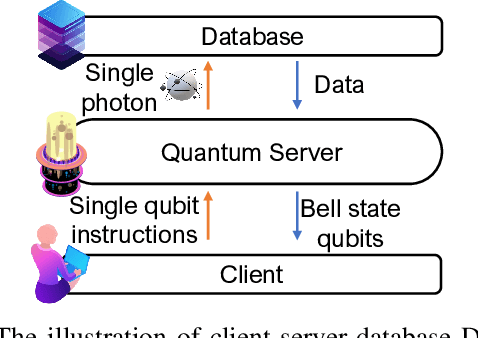
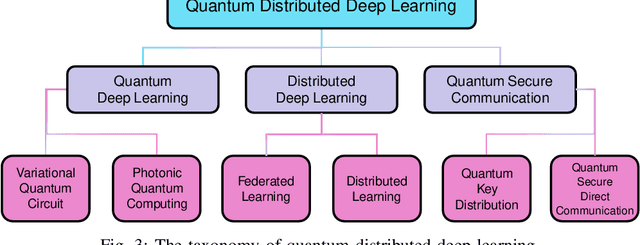
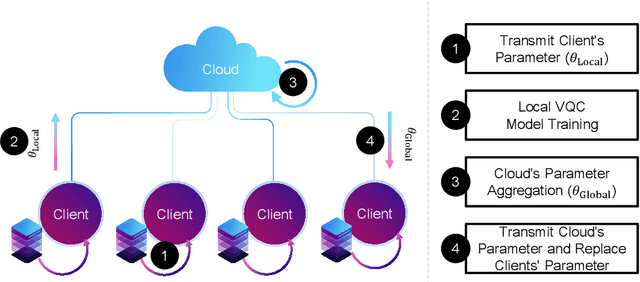
Abstract:Deep learning (DL) has already become a state-of-the-art technology for various data processing tasks. However, data security and computational overload problems frequently occur due to their high data and computational power dependence. To solve this problem, quantum deep learning (QDL) and distributed deep learning (DDL) are emerging to complement existing DL methods by reducing computational overhead and strengthening data security. Furthermore, a quantum distributed deep learning (QDDL) technique that combines these advantages and maximizes them is in the spotlight. QDL takes computational gains by replacing deep learning computations on local devices and servers with quantum deep learning. On the other hand, besides the advantages of the existing distributed learning structure, it can increase data security by using a quantum secure communication protocol between the server and the client. Although many attempts have been made to confirm and demonstrate these various possibilities, QDDL research is still in its infancy. This paper discusses the model structure studied so far and its possibilities and limitations to introduce and promote these studies. It also discusses the areas of applied research so far and in the future and the possibilities of new methodologies.
 Add to Chrome
Add to Chrome Add to Firefox
Add to Firefox Add to Edge
Add to Edge